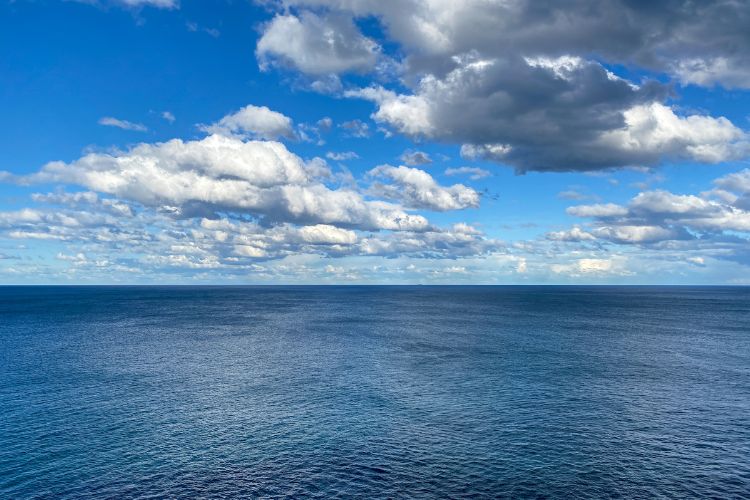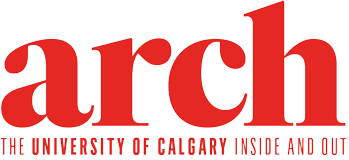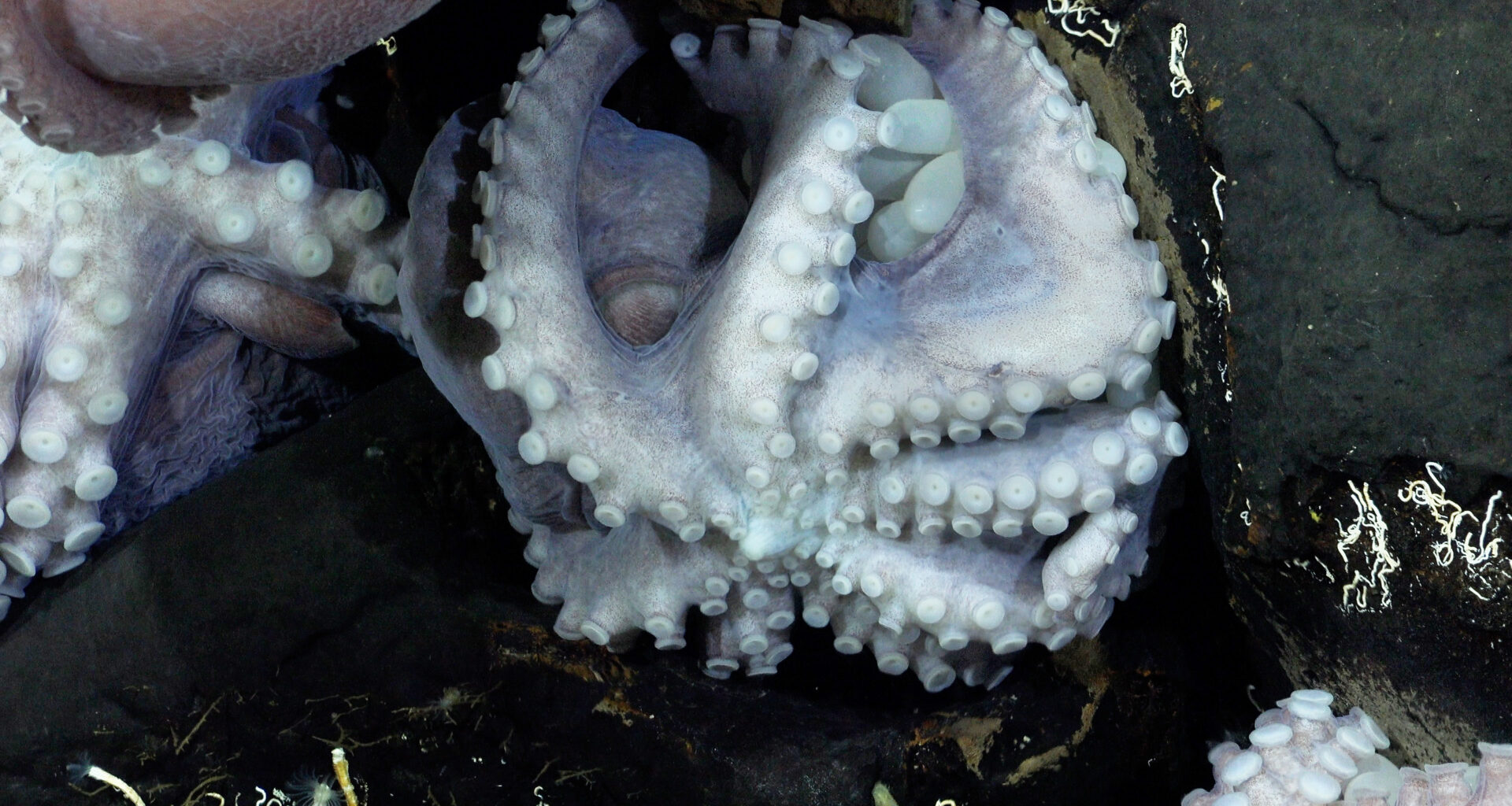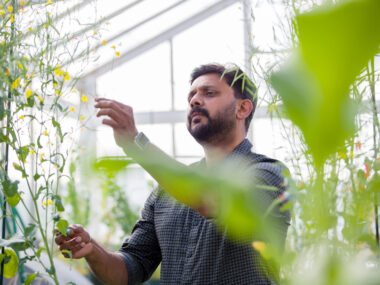Written by Jaelyn Molyneux BA’05
They appeared in the dark, seemingly out of nowhere. Spotted through cameras on a robot that was sent to the bottom of the ocean, its lights shining like a spaceship going into the unknown. As it roved the seafloor, controlled by pilots and directed by scientists three kilometres above, it stumbled upon dozens of octopuses clinging to underground mountains. They were protecting their eggs. Not eating. Not sleeping. Just protecting their eggs from predators and waiting for them to hatch. Waiting for what might have been years.
It was the first known deep-sea octopus nursery in the world and it wasn’t supposed be there. Science at the time suggested octopus shouldn’t be able to survive in those conditions.
The serendipitous discovery 10 years ago, which led to years of follow up exploration, is a reminder that we don’t know what we don’t know — and that we really don’t know a lot about the ocean; though it covers 70 per cent of the earth’s surface, we have only mapped five per cent of it. But that is changing. Finding the octopus created a template for how we can learn more about the mysteries of the deep sea.
Dr. Rachel Lauer, PhD, an associate professor in the Department of Earth, Energy and Environment at the University of Calgary, helped create the map that led to the treasure. At the time, it wasn’t even octopus they were looking for.
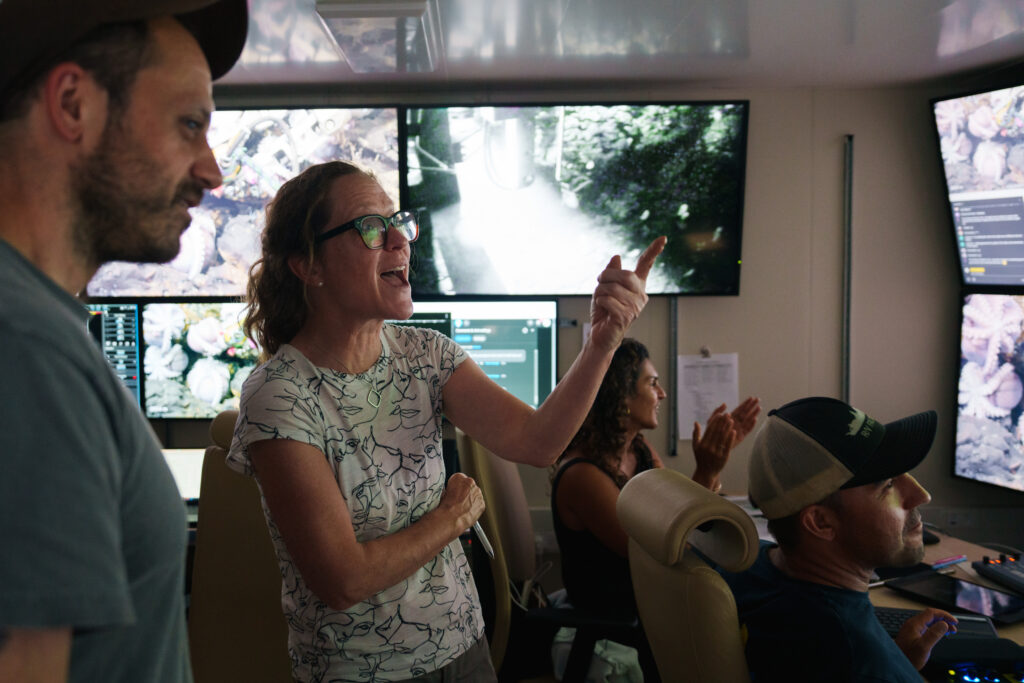
The shimmer will show them the way
In 2013, Lauer was on board the Atlantis. The state-of-the-art research vessel operated by Woods Hole Oceanographic Institution was above the Dorado Outcrop 150 km off the west coast of Costa Rica, with a team of scientists searching for the purest of pure water. Their goal was to study the water and the microbial life in it to understand how anything could possibly survive in such a dark, cold, high-pressure place. How did anything get energy? What was the chemistry of the water that allow microbes to survive?
The team needed pristine water that wasn’t contaminated by drilling mud or compromised by being pulled up through a pipe. It’s not as simple as scooping out a bucket.
To get the water, the researchers need to go down to the undersea mountains that peak above deep layers of sediment on the ocean floor. It’s through these “seamounts” that water flows in and out of the earth’s crust. The water coming out is clean. That’s where there is higher chance of an abundance of life.
“We use physics and heat flow to anticipate where those sites might be,” says Lauer. “What they needed from me was numerical models to estimate how much water is going in one place and coming out the other.”
Water heats and cools as it moves in and out of the earth’s crust. That difference in temperature is the process of hydrothermal circulation and it includes the data Lauer needs to create heat flow maps to point the way to the water they need.
In 2013, that was in the region surrounding the Dorado Outcrop where the heat flow was 70-per cent lower than it should be. With that much missing heat, the heat-flow models suggested flow rates like an underwater geyser. The researchers would know they found it, not just because of math and physics, but also by a telltale shimmer.
“You can’t see cold water moving because it’s the same density as the surrounding water,” explains Lauer. “You can see these places where warm water is coming out. It’s almost like a hot road on a summer day.”

They sent a remotely operated vehicle (ROV) down to where no one had been before in search of shimmering water. As predicted, instead of a gushing geyser, the water coming out looked more like shimmering spurts from a collection of underwater lawn sprinklers.
But it wasn’t this phenomenon that truly captured their attention. They also found an octopus nursery.
The discovery that shouldn’t have been there
“We found hundreds of octopus with clutches of eggs,” says Lauer. The female octopus were clinging to the sides of the seamounts near the vents where the warm water was coming out. “It was a totally unexpected, serendipitous discovery.”
It was an incredible sight, but, with no octopus experts on board, the magnitude of the discovery didn’t register. They sampled the sprinkler water, mapped more of the ocean floor and considered the excursion a success — with bonus octopus encounters.
In 2014, they went down again. Again, they were there to focus on heat flow, geochemistry and microbes — and this time they took video cameras along. Still, no one was aware of how unusual the octopus nursery was. Those videos were later attached to a published paper focusing on the chemistry of the water. Curious scientists read the paper and inquired how it was even possible those octopus existed.
Octopuses are solitary. They don’t tend to congregate in large groups. They don’t like warm water because it’s lower in oxygen. Are the eggs even viable? Was there some sort of evolutionary glitch? Are they doomed to fail?
And, just like that, a deep-sea excursion that was mapped by geophysics and about water chemistry and microbe research led to the discovery of a new species of octopus and more questions about life and survival.
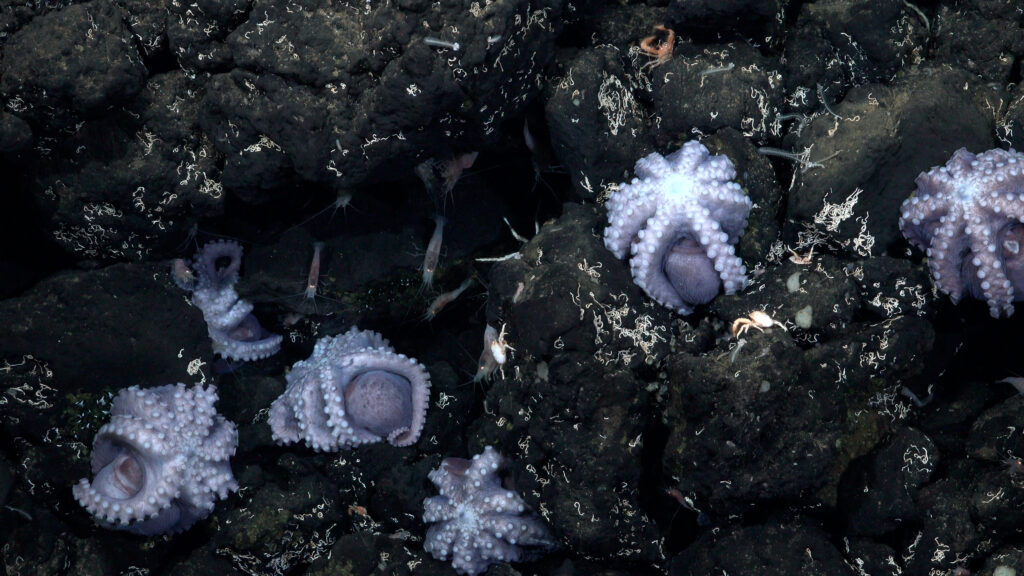
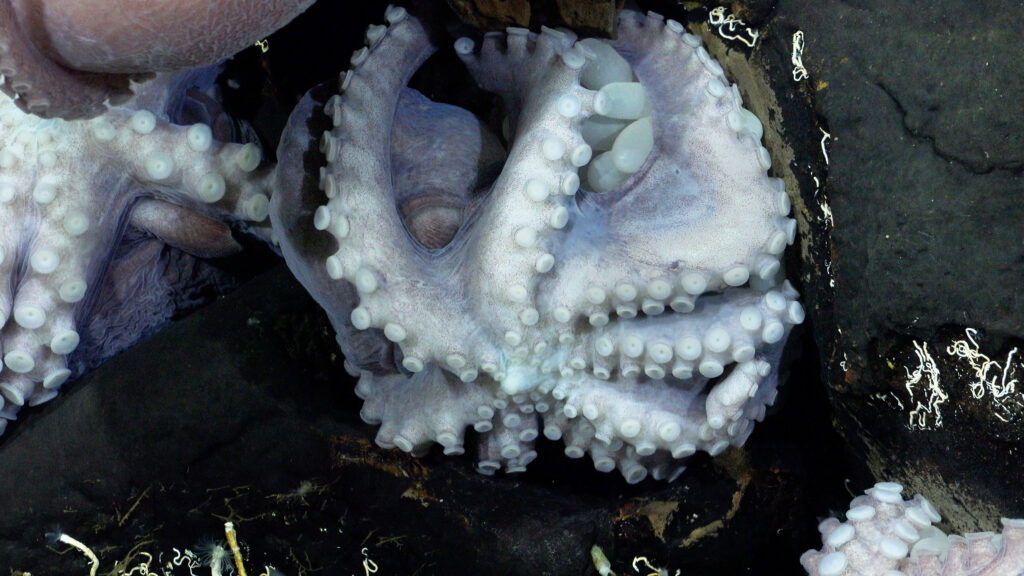
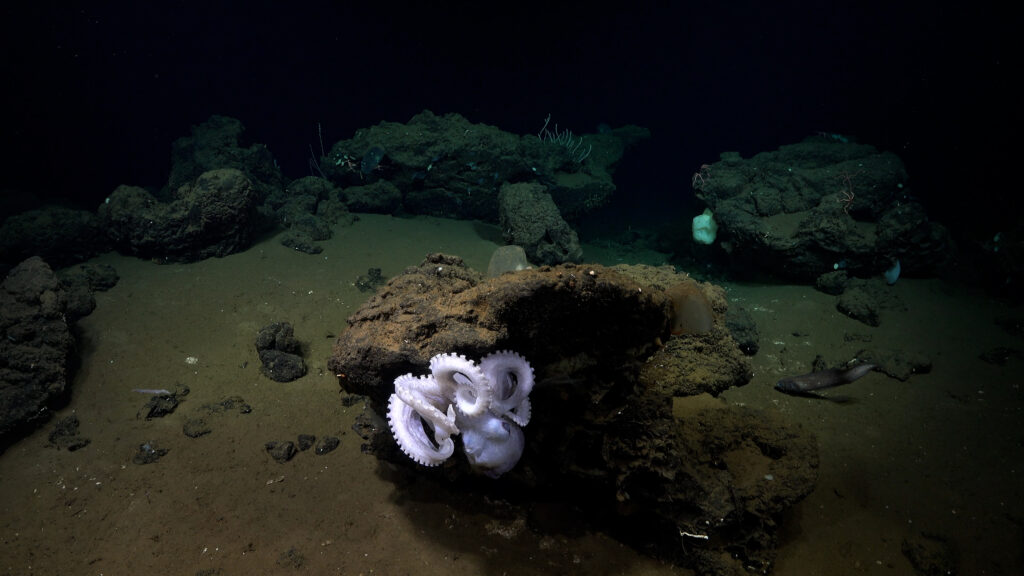
Physics led the way, but seeing was truly believing
To answer those questions, a team went back in 2023. This time on the Schmidt Ocean Institute’s vessel Falkor (too) with a team that included microbiologists, policy experts and even artists. Lauer was there again for heat-flow mapping, along with UCalgary PhD student Rob Perrin, BSc’04, MSc’18. The cruise was dubbed Octopus Odyssey. Chief scientists Dr. Beth Orcutt, PhD, from the Bigelow Laboratory for Ocean Sciences and Dr. Jorge Cortés-Núñez, PhD, from the University of Costa Rica led a team of 18 scientists, half of whom were from Costa Rica and other Latin American and Caribbean countries – Schmidt Ocean Institute’s policy is to build capacity for deep-sea research in the region. The team, which happened to be mostly women, was interdisciplinary and curious.
“On the ship, everyone wanted to understand what everyone else was working on.” says Lauer. “In really hard-to-work, data-poor environments like deep ocean, you have to leverage the interdisciplinary and transdisciplinary aspects of the work to really make progress.”
They gathered daily to debrief and use what they learned to calibrate where to go and what to look for the next day. They narrowed down the search area, but it was still the size of a soccer field. Even with months and, in some cases, years of preplanning, each hour led to new information. There were constant pivots to make the most out of their 19 days at sea.
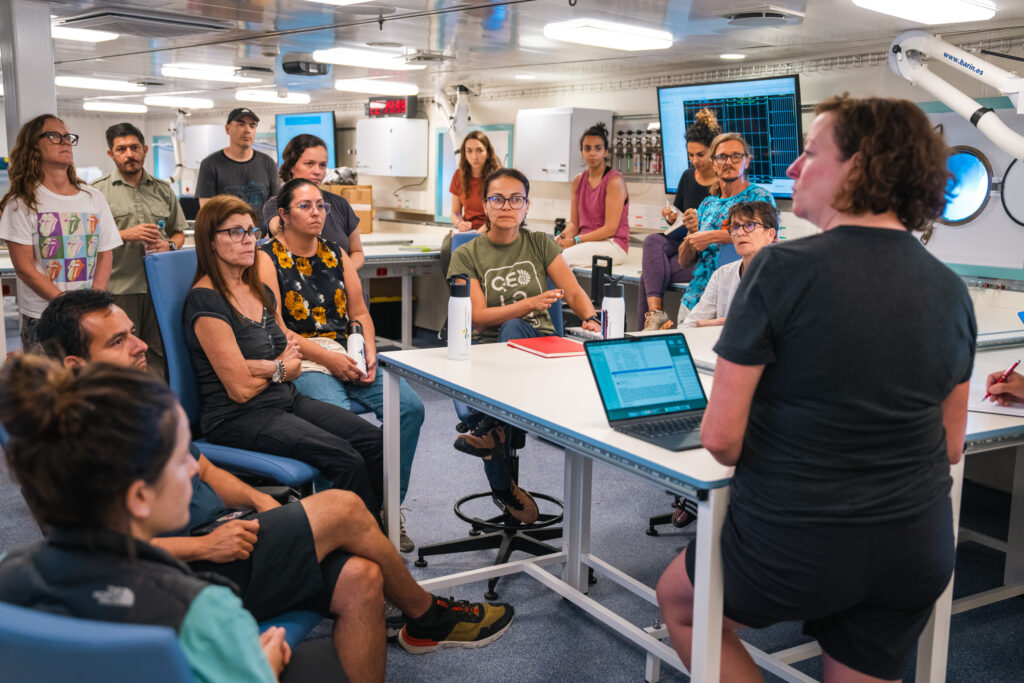
The scientists rotated shifts in the ship’s control room, a place Lauer likens to the starship Enterprise. Its walls are lined with screens showing high-definition images captured by million-dollar 4K cameras as they dropped through the ocean, recording everything as they went.
“Every day, I couldn’t stop looking at the footage of what was coming into the control room,” says Lauer. “There was a constant flood of imagery that you can’t possibly imagine anywhere, let alone at the seafloor, and being able to see it with experts in the room also getting excited.”
The images they were most anticipating were of the octopus nursery — if it was still there. There was no guarantee that they would be alive. It didn’t take long to find out. They discovered the fate of the octopus nursery on the first dive. Attached to a massive crane and long cable, SuBastian the robot was slowly lowered into the dark ocean from the Falkor (too), softly landing 3,100 metres below the surface. Within 16 hours, it had crawled to the site of the nursery discovered a decade earlier.
“I was holding my breath hoping they were still there,” recalls Lauer. “You just don’t know; it’s literally exploration.”
“That’s the most exciting part and sometimes it’s also the depressing part of the work. You could discover something you weren’t looking for. Or, you could be totally wrong about what you thought you were going to find. In this case, I was very emotionally caught up in it, having been part of the previous two expeditions in 2013 and 2014.”
Lauer’s emotion became elation when the octopuses appeared on screen.
“They hadn’t migrated elsewhere,” says Lauer. “It wasn’t an evolutionary fail.”
In fact, over the decade the octopus nursery had doubled in number. Seeing them alive and thriving confirmed the scientists’ hypothesis that they likely sought out the hydrothermal vents to brood their eggs. Within days, they saw eggs hatching and babies swimming.
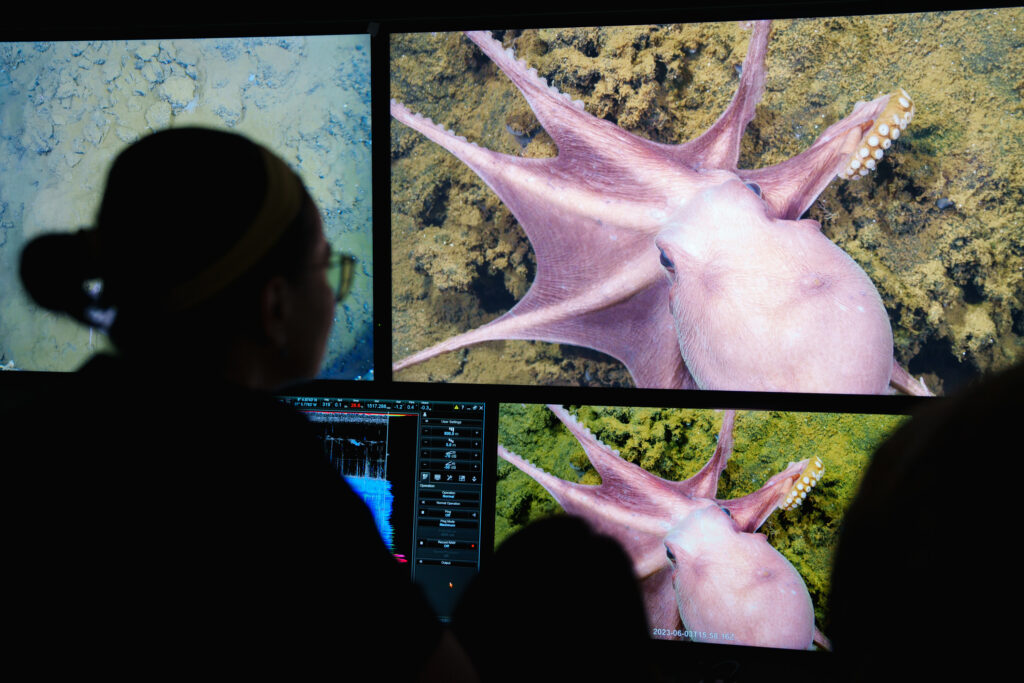
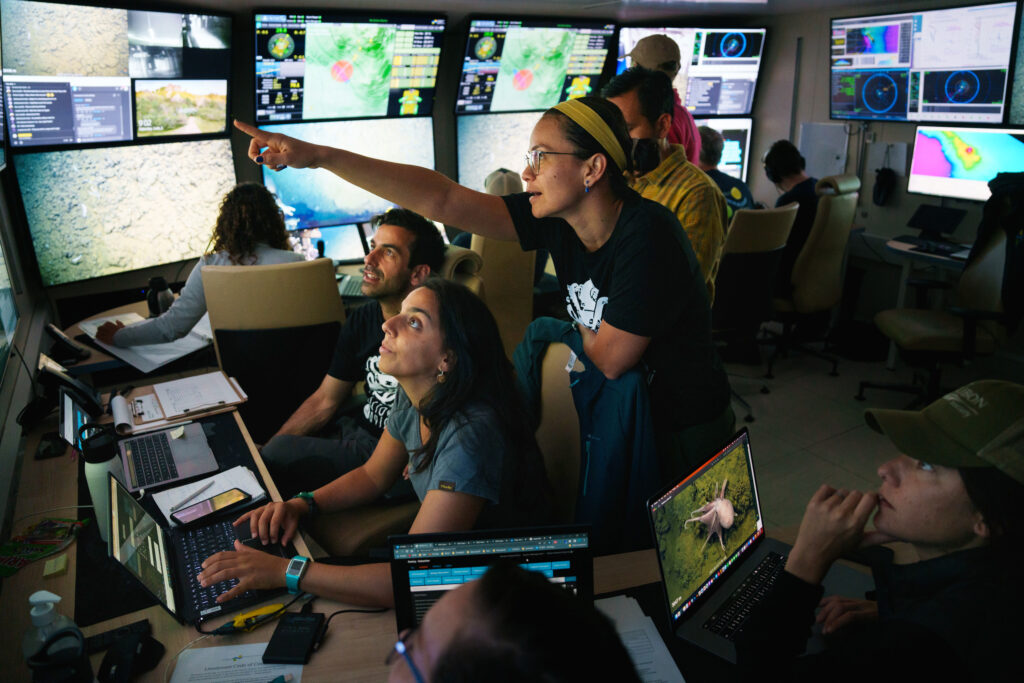
“To visually put our eyes on things that we theoretically know happen is incredible,” says Lauer. The physics she had simulated over years was proven correct. “It was mind-blowing to have so much success in one trip.”
For Lauer, the octopus discovery showcased how important scientific collaboration is. The focus of the Octopus Odyssey was mostly biology and learning more about the cephalopods, but Lauer’s physics expertise and heat-flow mapping was critical to the discovery. It’s all interconnected and it’s the type of work Lauer wants to continue doing.
Exploration before exploitation
“I like having the work I do be so helpful in ways that haven’t been done before. That means it’s always fresh. It’s always exciting,” says Lauer. “The deep ocean is the last frontier. We know very little. How do I help with that?”
But the environmental clock is ticking, and more knowledge about the ocean is needed quickly.
“Right now, we are very realistically considering destroying an ecosystem that we haven’t even started to understand,” she says.
There are escalating discussions around deep-sea mining for resources like manganese and cobalt that are needed to create products like car batteries for the energy transition. Scientists like Lauer want those conversations to slow down (and maybe even stop) to consider what might be lost before permanent damage is done.
Cruises like the Octopus Odyssey added to the mapping while discovering new forms of life and information about survival and biodiversity.
“You have to do the work first to map it and understand it to know what you are protecting versus what you should be exploiting,” says Lauer. “You can’t wind back the clock once you start a process that damaging.”
Lauer’s geothermal work and the lessons that have been learned at the Dorado Outcrop are a guide for future ocean exploration.
“We can use hydrothermal circulation to look for these hotspots and biodiversity,” she says. “We can use what we know about this site and others as a template for studying the oceans as a whole.”

The Schmidt Research Vessel
The Falkor (too) is the current research vessel for the Schmidt Ocean Institute, a non-profit research organization founded by former Google CEO Eric Schmidt and his wife, Wendy. It includes eight laboratories including wet labs, a robotics lab and a cold lab for biological work. It also uses an underwater robot called SuBastian about the size of a mini van that is lowered by cable and controlled from the surface. It’s equipped with cameras and lights and designed to be modular so scientists can add instruments they need to record sonar, water clarity, temperature and more. All of SuBastian’s dives are live-streamed.
Underwater Earthquake Research
Rachel Lauer’s hydrogeology work also takes her to major fault lines around the world. In fall 2023, she’ll join a cruise along the Queen Charlotte Fault that runs from Vancouver Island up to Alaska. There she will collect heat flow data adjacent to the fault to understand flow patterns along the earthquake prone system. Water flowing in, out and across fault lines helps us understand how those deformation and earthquakes happen. This year, she also joined an excursion aboard the vessel Thompson for the International Ocean Drilling Program to collect data from permanent observatories at the bottom of the Pacific Ocean off the coast of Oregon. Her work on both of these cruises crosses over with other disciplines to help us understand more about what is happening in the earth at the bottom of the sea.
